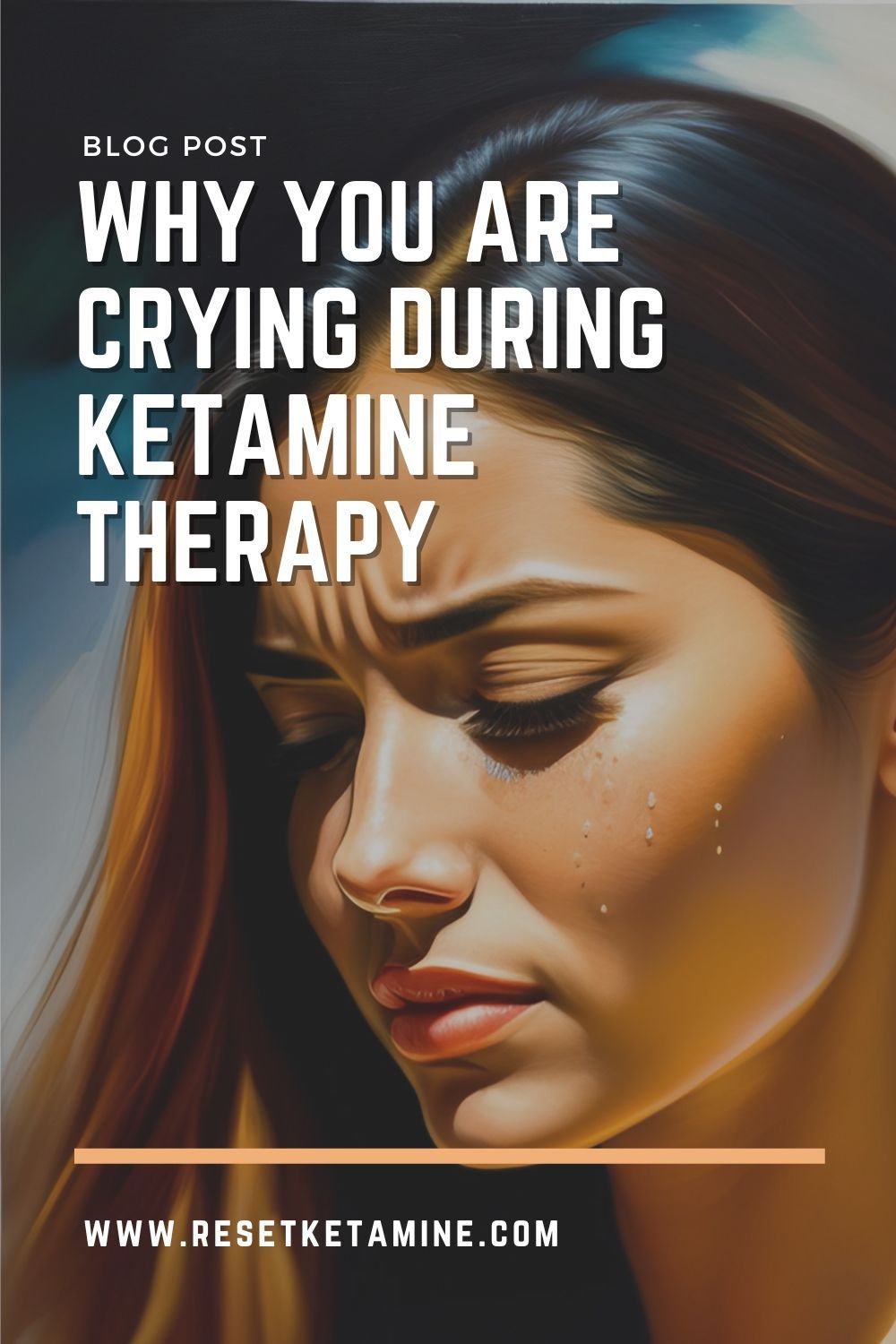This blog is adapted from the transcript of the above video Why You Are Crying During Ketamine Therapy
In this blog, uncover the reasons behind the tears during ketamine sessions and learn how this deep emotional release can pave the way for true healing and understanding.
Crying during a ketamine therapy session could mean that suppressed emotions may have risen to the surface.
Why Does Ketamine Therapy Lead to Tears?
A question I get asked about ketamine therapy is, “Why do I cry during my ketamine session?” Ketamine has the potential to dissolve the barrier between your conscious and unconscious minds. If layers of sadness or suppressed emotions exist "under the hood," they might rise to the surface during therapy. It brings to mind the saying, "What soap is to the body, tears are to the soul." Essentially, crying serves as a form of emotional release.
It’s not uncommon for patients to experience emotional release when they’ve suppressed their emotions for so long.
Tears: An Excretory System for Emotions
Our bodies have systems like the urinary and digestive systems, designed to release waste. Similarly, our tear glands act as an excretory system, but for emotions. Whether the tears stem from joy or previously unprocessed emotions, these tears play a vital role in your emotional well-being. During ketamine therapy, it's not uncommon for patients, especially those who've suppressed their feelings for long periods, to experience such emotional release.
The deeper you are able to experience sadness, the more intense you will be able to experience joy.
From Deep Sadness to Profound Joy: The Range of Feelings
I am reminded of the case of one of my patients who hadn't shed a tear in two decades. During each session of their six-initiation ketamine series, they cried profusely. Their eye mask was drenched every time. This emotional outpouring might be startling for some, but it's key to recognize it as a normal human experience. Think of it this way: The deeper your capacity to feel sadness, the greater your potential to experience intense joy. Like a piano with its vast range of notes, from high, joyful tunes to deep, somber melodies, your emotions span a wide spectrum. Experiencing this range is what makes us human.
Although experiencing your emotions during ketamine therapy is important, it’s equally as important to integrate afterwards.
What To Do After the Tears Flow
If you find yourself shedding tears during ketamine therapy, anticipate it as a possible response and understand its normality. However, what's crucial after your treatment is the integration process. Discuss your feelings with your therapist, ketamine practitioner, or a psychedelic integration coach. If these aren't options, consider other avenues like journaling or art, allowing you to process and make sense of the emotions that emerged during therapy.
Your tears, whether they be from joy or sadness, cleanse your soul.
In Closing: The Healing Power of Tears
Emotional release during ketamine therapy, often manifesting as tears, is both natural and therapeutic. Whether these tears are born from joy, sorrow, or suppressed emotions, they indicate a profound internal journey. It's essential to understand this response, embrace it, and ensure that the emotions are processed adequately post-session. After all, as the saying goes, tears cleanse the soul.
If you enjoyed this blog, check these out too:
Why You Feel Tired After Ketamine Therapy
In this blog, Dr. Ko explores reasons you may feel fatigue after ketamine infusions; from the treatment's journey-like effects to reconnecting with one's body and emotions. Plus, find out what to do about the fatigue and review what the research shows!
What To Expect After A Ketamine Infusion
You may be wondering what’s going to happen during your first ketamine infusion. How are you going to feel after a ketamine infusion? What should you watch out for? In this blog, we’ll share what you may experience and what you might want to anticipate after your ketamine infusion.
How to Prepare For And Integrate From a Ketamine Infusion
Ketamine's life transforming effect isn't just because of the medicine itself. What equally if not more important is the preparation before and integration after the infusion. Explore this topic more at our blog!










